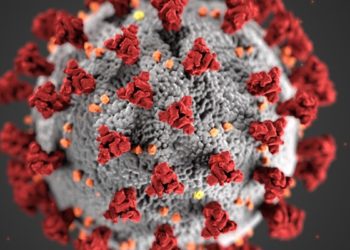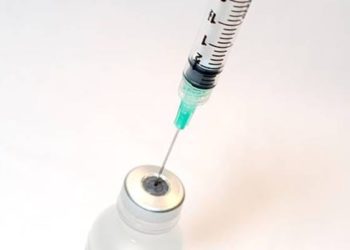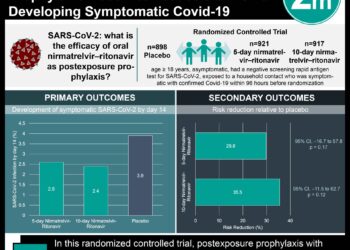CD45 T cell and macrophage infiltration characteristic of COVID-19 related lung injury
1. In this case series, imaging mass cytometry revealed aberrant CD45RA+ T cells in the lung tissue of patients with COVID-19.
2. The identities of infiltrated cells were determined to be CD4 and CD8 T cells; CD16 and CD107A natural killer cells; and CD68 and Arg1 macrophages.
Evidence Rating Level: 4 (Below Average)
Study Rundown: Severe cases of COVID-19 are often characterized by progressive respiratory failure and extreme alveolar damage. While mononuclear cell infiltration and hyaline membrane formation have previously been observed, the specific cell types present were not identified. This study compared lung tissue from two patients with COVID-19 and fatal acute respiratory distress syndrome (ARDS) to that of a control patient with a pulmonary nodule. Imaging mass cytometry revealed that, while the control patient had only infiltration of interstitial inflammatory cells, both COVID-19 patients had alveolar septal edema and epithelial cell proliferation. In addition to these commonalities, the first patient had the typical histological features of ARDS including a small number of neutrophils and infiltration of lymphocytes and monocytes, while the other had the typical features of bacterial pneumonia including desquamation of pneumocytes, cellular fibromyxoid exudates, neutrophil debris, and pus cells in alveolar cavities. Tissue from both patients contained diffuse T lymphocytes (CD45RA), but the first patient also had diffuse CD68 macrophages and a focal infiltration of natural killer cells (CD16 and CD107A). The second patient had a cluster infiltration of neutrophils (CD11b and CD16) and activated macrophages (Arg1) as well as a scattered infiltration of natural killer cells and dendritic cells (CD276 and CD14). These findings suggest that COVID-19 is marked by recruitment of aberrant CD45RA+ T cells and that phagocytes begin to significantly contribute to lung injury following the development of bacterial pneumonia.
Click here to read the study in Annals of Internal Medicine
Relevant Reading: COVID-19 infection: the perspectives on immune responses
In-Depth [case series]: In this study, lung tissue was collected by autopsy from two patients with COVID-19 and fatal ARDS. The first patient was 94 years old with a history of coronary artery disease who presented with lethargy and fever for 8 days prior to admission. Auscultation revealed wheezing in both lungs, and chest radiography revealed right pulmonary infiltration and consolidation with pleural effusion. Her C-reactive protein level was 115.1 mg/L and the leukocyte count was 10.2E9 cells/L with 9% lymphocytes. She died from cardiac arrest on day 10. The second patient was a 65-year-old man with a 4-day history of dry cough, anorexia, and fever. He had a C-reactive protein level of 13.5 mg/L and a leukocyte count of 3.0E9 cells/L with 27.4% lymphocytes. Computed tomography of the chest revealed bilateral pneumonia, and moxifloxacin was administered to prevent secondary infection. The patient began to require invasive ventilation on day 15, and by day 16 had a C-reactive protein level of 244.4 mg/L, a leukocyte count of 10.1E9 cells/L with 1.6% lymphocytes, and blood lactic acid level of 3.13 mmol/L. After unsuccessful treatment with vancomycin, imipenem, methylprednisolone, and immune globulin, the patient died of septic shock on day 21. While imaging mass cytometry found cluster distributions of mature T cells and macrophages in both samples, more CD45RA+ T cells were recruited in the first patient, and more CD45RO+ T cells were recruited in the second.
Image: PD
©2020 2 Minute Medicine, Inc. All rights reserved. No works may be reproduced without expressed written consent from 2 Minute Medicine, Inc. Inquire about licensing here. No article should be construed as medical advice and is not intended as such by the authors or by 2 Minute Medicine, Inc.







